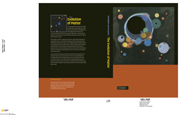Book contents
- Frontmatter
- Contents
- Introduction
- Part I The elements
- Part II Early solar system: nebula formation, evolution and lifetime
- 9 Introduction to the solar nebula
- 10 The primary solar system objects and related processes
- 11 Chondritic meteorites
- 12 Highly processed meteorites
- 13 A summary of early solar system chronology
- Part III Accretion of the Earth
- Part IV Global evolution of the Earth
- References
- Glossary
- Abbreviations
- Meteorites, rocks and minerals
- Index
13 - A summary of early solar system chronology
Published online by Cambridge University Press: 04 September 2009
- Frontmatter
- Contents
- Introduction
- Part I The elements
- Part II Early solar system: nebula formation, evolution and lifetime
- 9 Introduction to the solar nebula
- 10 The primary solar system objects and related processes
- 11 Chondritic meteorites
- 12 Highly processed meteorites
- 13 A summary of early solar system chronology
- Part III Accretion of the Earth
- Part IV Global evolution of the Earth
- References
- Glossary
- Abbreviations
- Meteorites, rocks and minerals
- Index
Summary
In Sections 10.3, 10.4, 11.6 and 12.4 the results of dating with various relative and absolute chronometers were reviewed, and time scales for the formation of different solar nebula bodies emerged. In the present brief chapter we attempt to present an overview by combining the results of highly precise and robust Pb/Pb dating with the time differences obtained from extinct-nuclide chronometry for different types of material.
Of the absolute-age determination methods applicable to early solar system history only Pb/Pb dating has so far demonstrated a precision of ±1 Myr or better, which is comparable with the short-lived nuclide chronometers, and it is the only option for calibrating these chronometers to an absolute time scale. It would be tempting to use Pb/Pb ages on CAIs for this. However, the individual Pb/Pb ages of CAI fragments from the Efremovka meteorite range from 4566 to 4569 Myr, scattering outside the analytical error (Amelin et al., 2002) and in contrast with the consistency of the (26Al/27Al)INI ratios. Further, CAIs, the most ancient solid objects to have been generated in the solar system, have I–Xe relative ages younger than some chondrite matrix samples and this indicates clearly that after their formation, their chemistry was affected to some extent by hydrothermal alteration, which is prevalent in carbonaceous chondrites and appears to have persisted for ∼ 10 Myr (Section 11.6). This means that in these inclusions Pb/Pb chronometers may have been affected by subtle alteration: Pb is relatively mobile in hydrothermal systems.
- Type
- Chapter
- Information
- The Evolution of MatterFrom the Big Bang to the Present Day, pp. 191 - 196Publisher: Cambridge University PressPrint publication year: 2008



